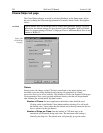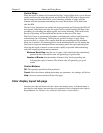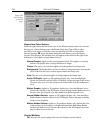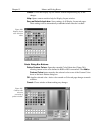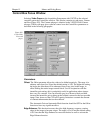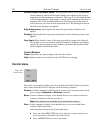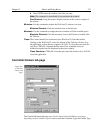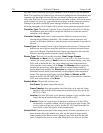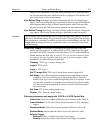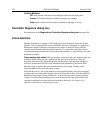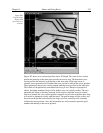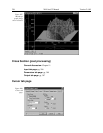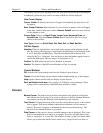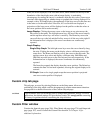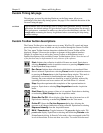
232 WinView/32 Manual Version 2.4.M
and some of the Controller/Camera type parameters, such as Shutter Type and Readout
Mode. The Controller and Camera Type selections are perhaps the most fundamental and
important of all hardware selection decisions and directly influence the appearance of
many other WinView/32 screens and the selections provided on them. As a result, setting
up the software for use in any system should always begin with the Controller selection.
Although all possible Controller/Camera tab page selections are discussed in the
following paragraphs, not all of them will be present for any particular controller model.
Controller Type:
The selected Controller Type is displayed in this text box. Clicking
on the button at the end of the box drops the selection list so that the selected
controller can be changed.
Controller Version:
In the case of some controllers, different versions have been
released having different capabilities. The available software selections will
correctly reflect these differences when the proper version number is specified in
this box.
Camera Type:
The selected Camera Type is displayed in this text box. Clicking on the
button at the end of the box drops the selections list so that the selected camera
type can be changed. Note that the listed camera types depend on the controller
selection, requiring that the controller type be specified first.
Shutter Type:
There are five possible selections,
Small
,
Large
,
Remote
,
Electronic
and
None
. Not all controllers provide all five selections. For most
cameras, the correct setting is
Small
. In the case of a camera having a very large
CCD, such as the Kodak 4k × 4k, a large shutter may have been installed, in
which case the correct setting will be
Large
. The
Remote
setting is primarily
intended for spectroscopy applications where an external shutter would be
placed ahead of the entrance slit.
Electronic
only applies to operation with an
Intensified camera, which would normally not be equipped with a mechanical
shutter. This selection would apply to both the
Gate
and
Shutter or CW
modes of the IIC-100, IIC-200 or MCP-100. If using a frame-transfer or interline
CCD array and no shutter, select
None
.
Readout Mode:
The possible selections are:
Full Frame:
The entire chip can be read out
Frame Transfer:
Only the unmasked area of the chip can be read out. Frame
transfer is only available if the camera has a frame-transfer chip such as the
EEV 512 × 1024.
Interline:
Provides 100% duty cycle operation. Interline is only available with a
camera having an interline chip such as the PI 1300 × 1030.
Kinetics:
Kinetics is a special type of operation in which most of the CCD is
mechanically or optically masked, leaving a small section open to light. This
section is then read out very quickly. See the ST-138 Controller manual for
more details on the CCD aspects of this readout mode.
Vertical Shift:
Determines the speed of the image transfer from the exposed area of a
frame-transfer chip to the masked area. Also sets the speed of image transfer
when operating in the Kinetics mode. Setting a lower value increases the shift
speed. A higher value gives a slower shift. If the shift is too fast, not all of the



